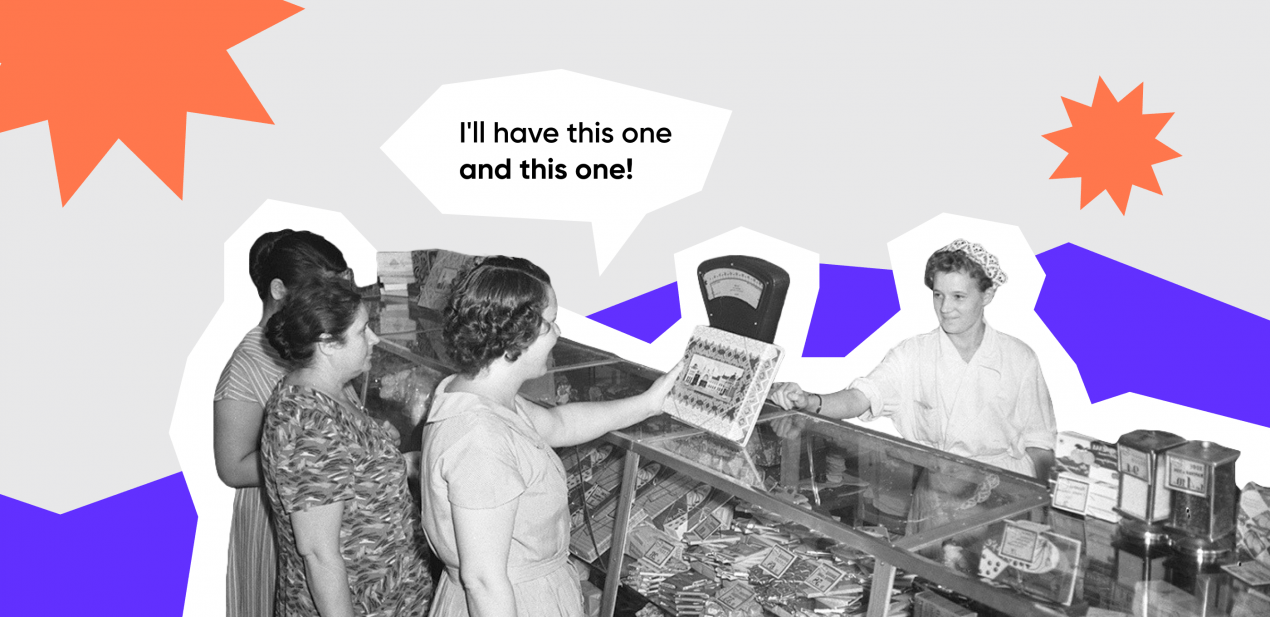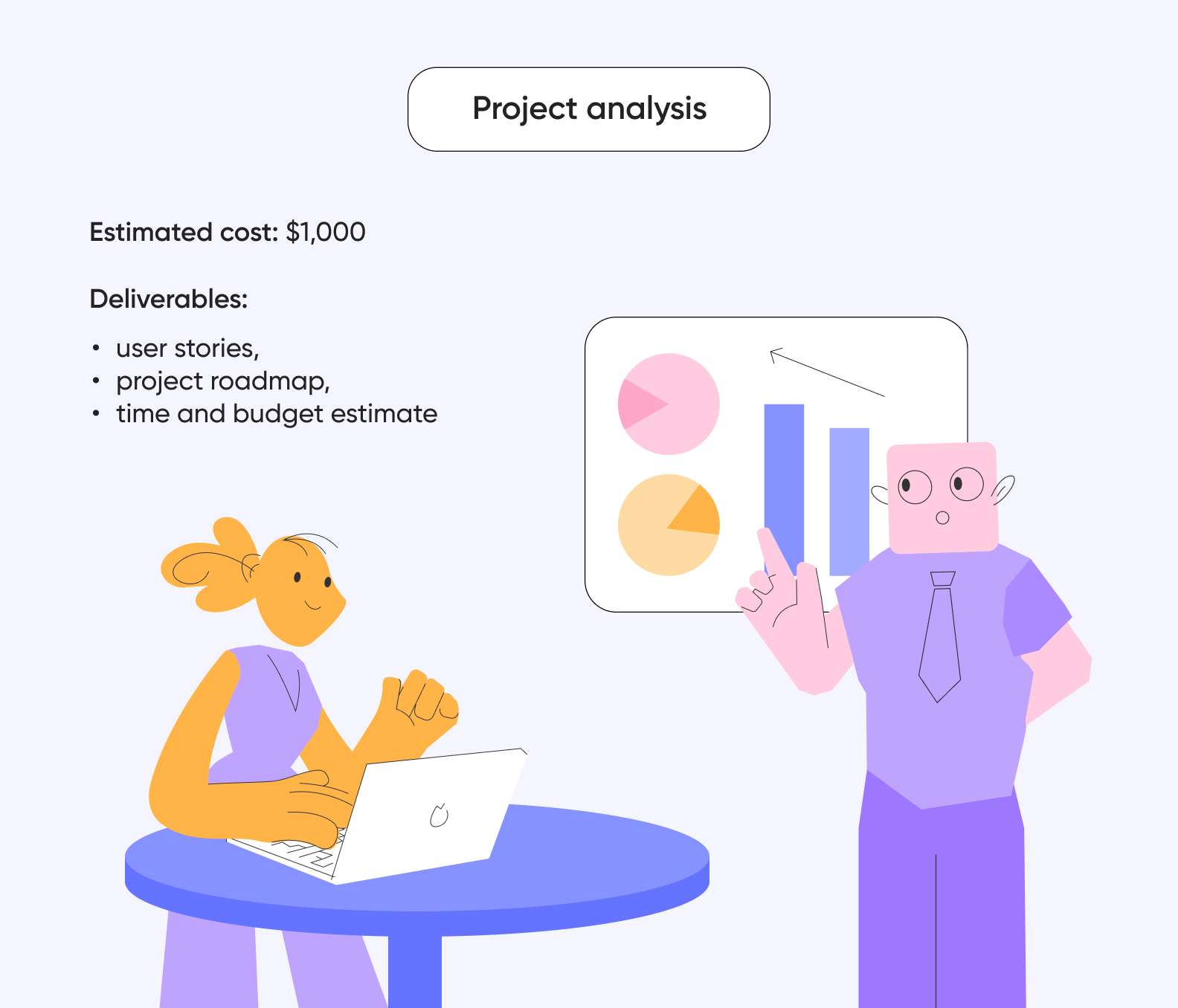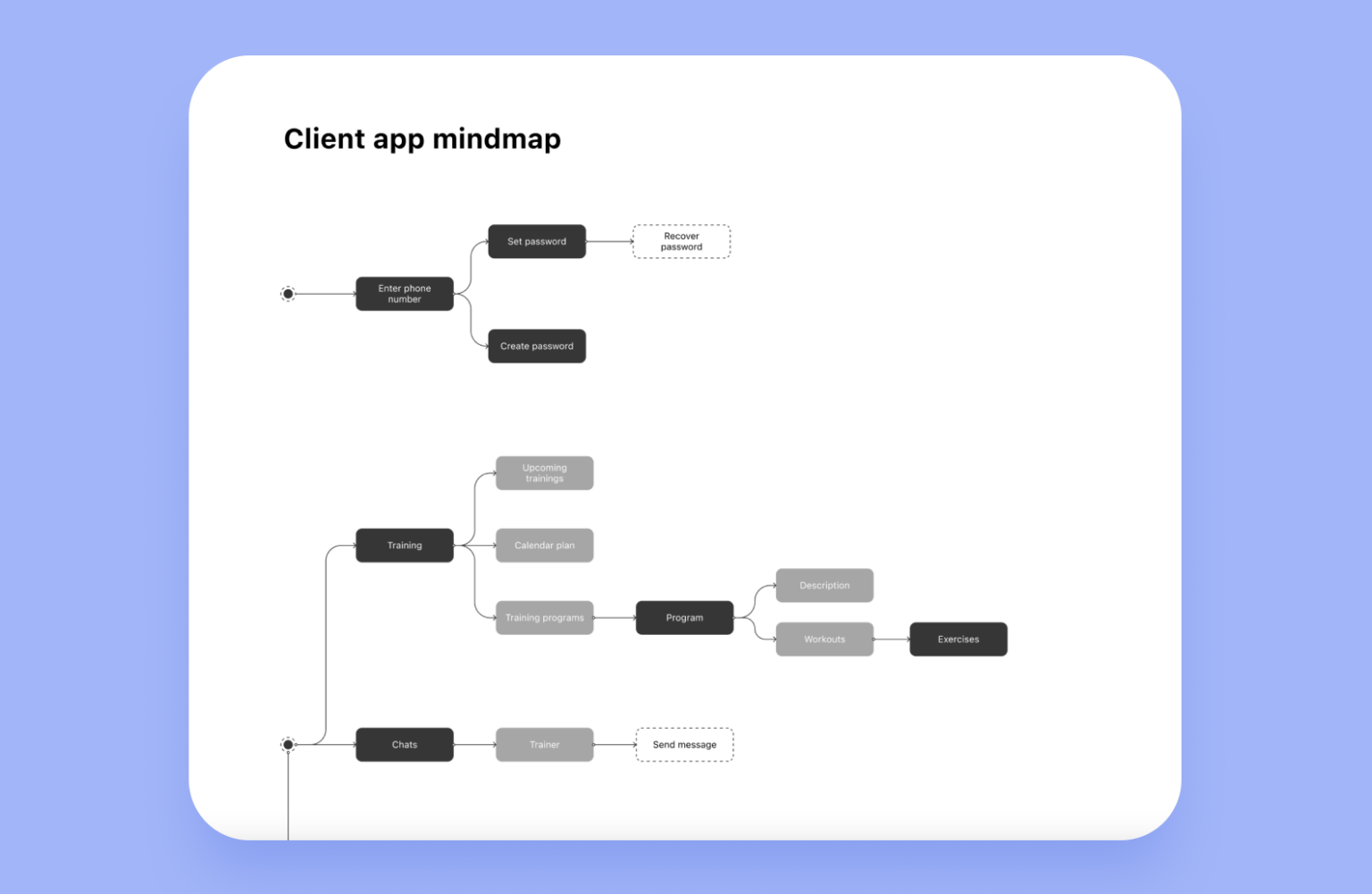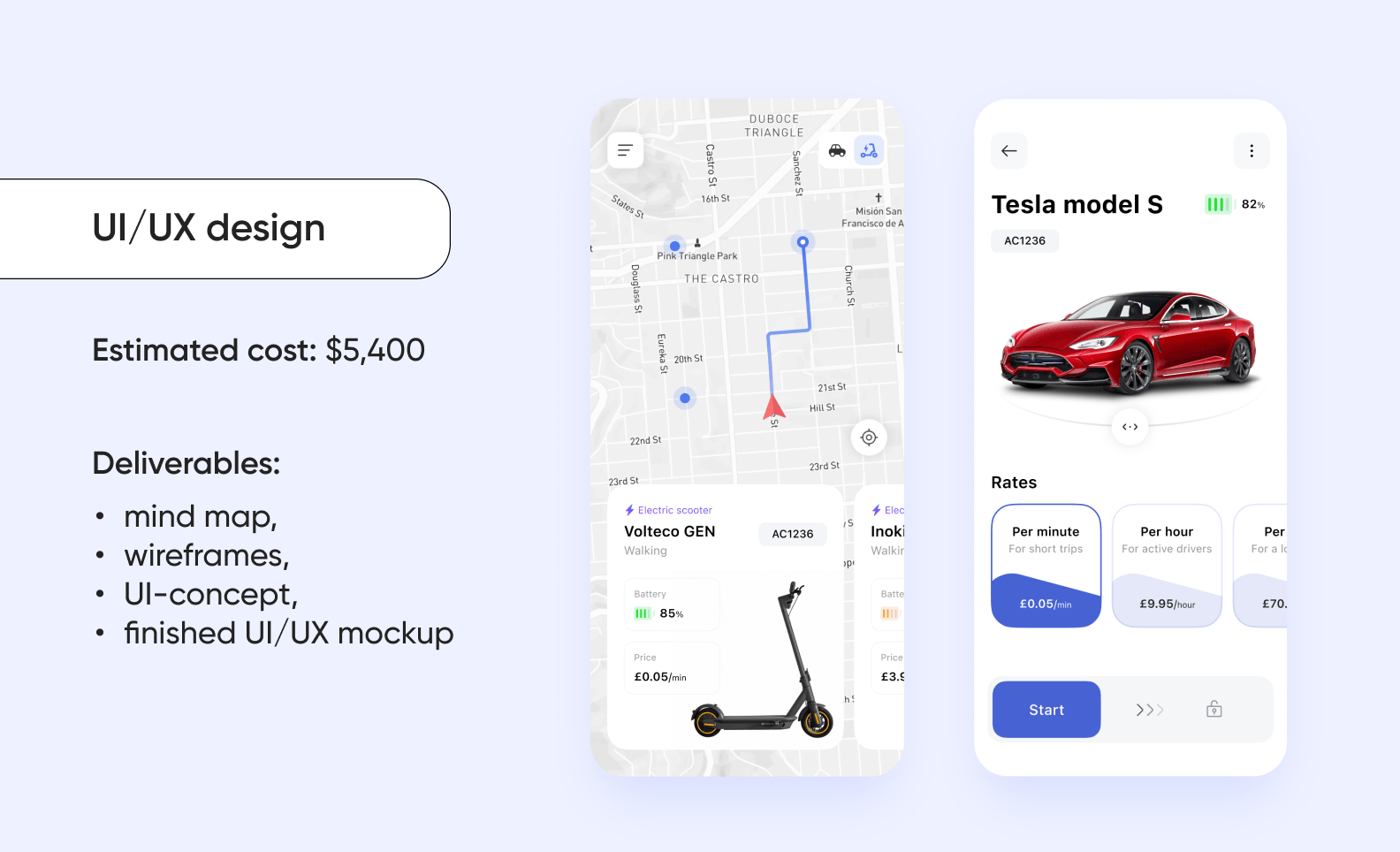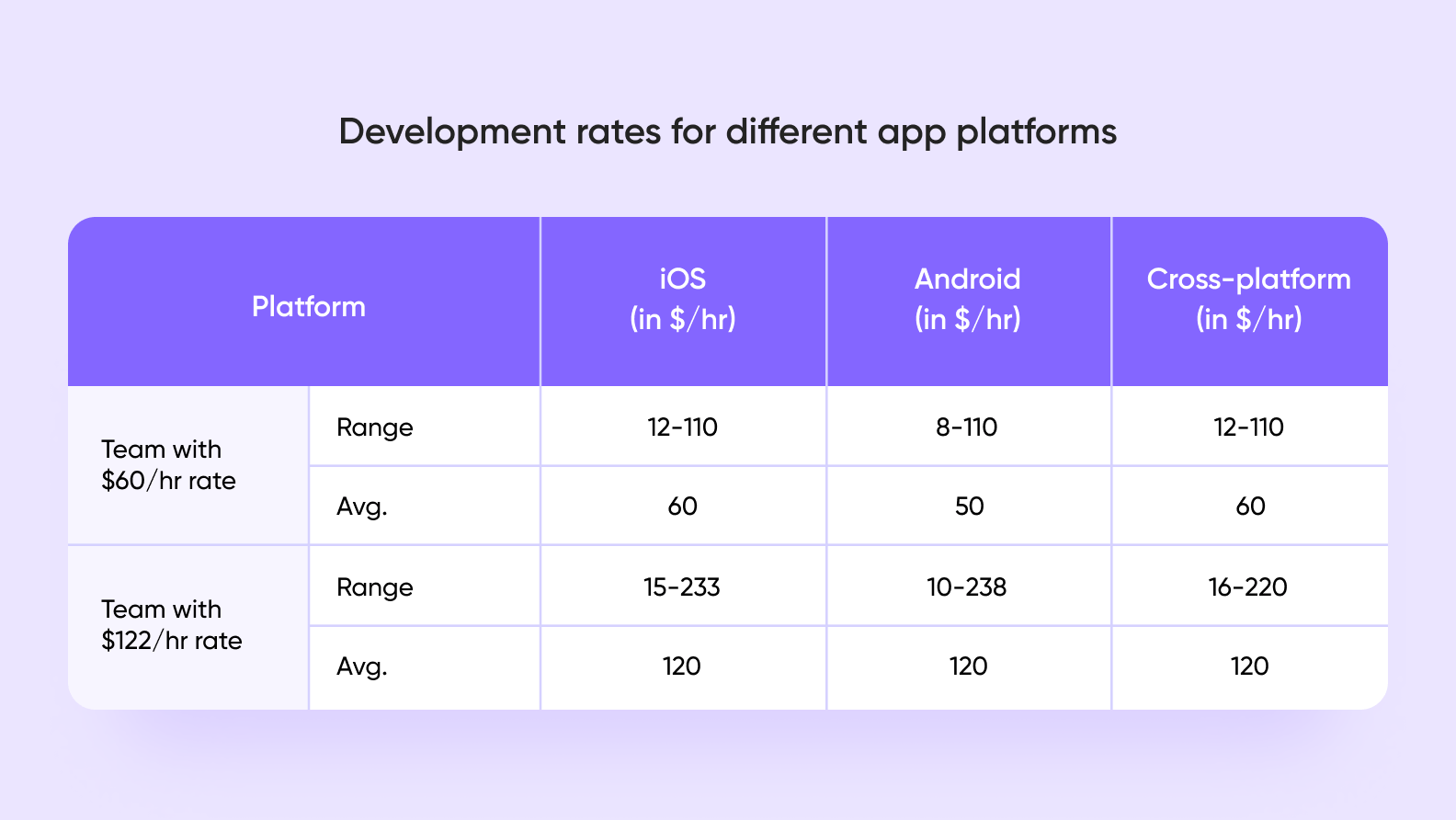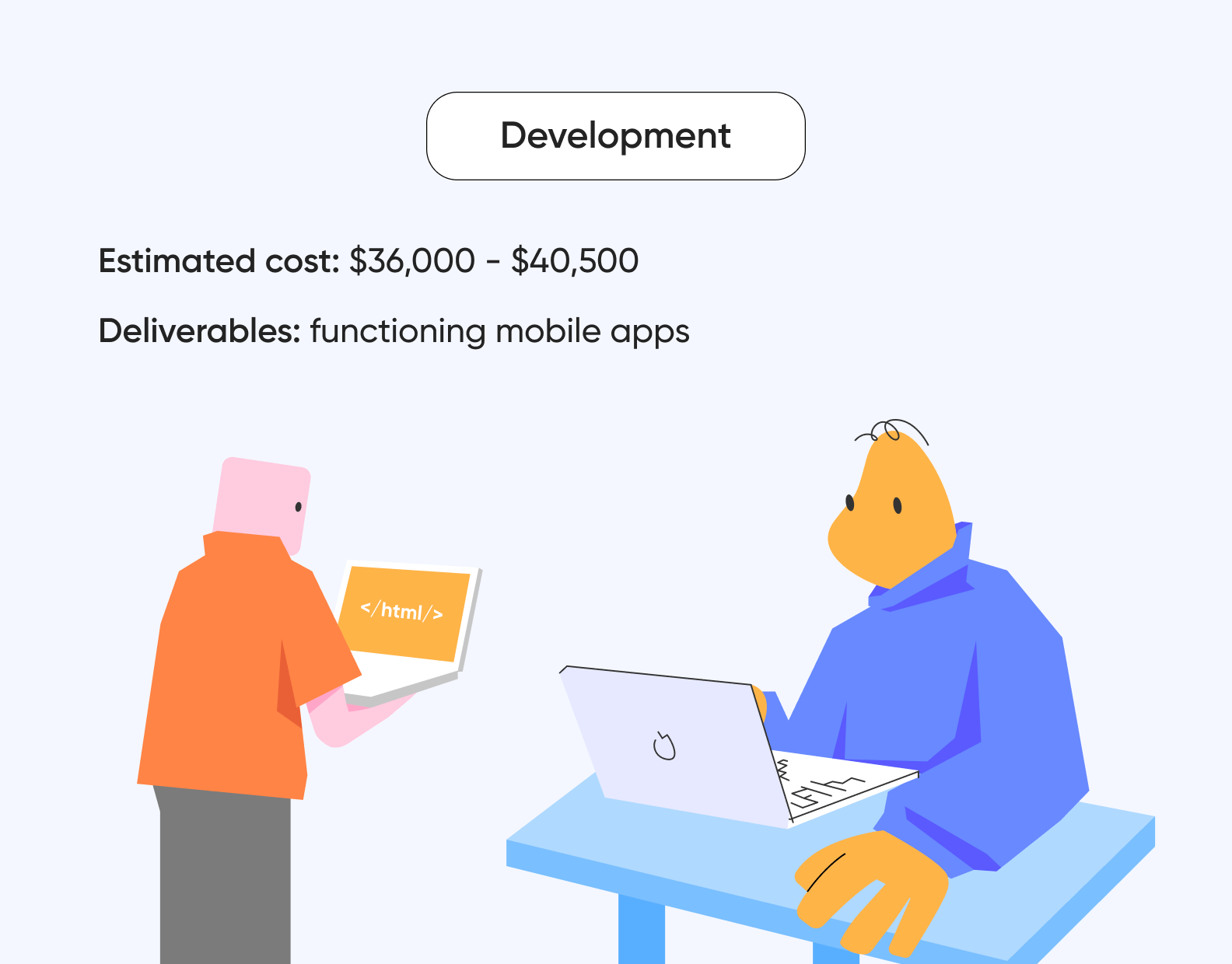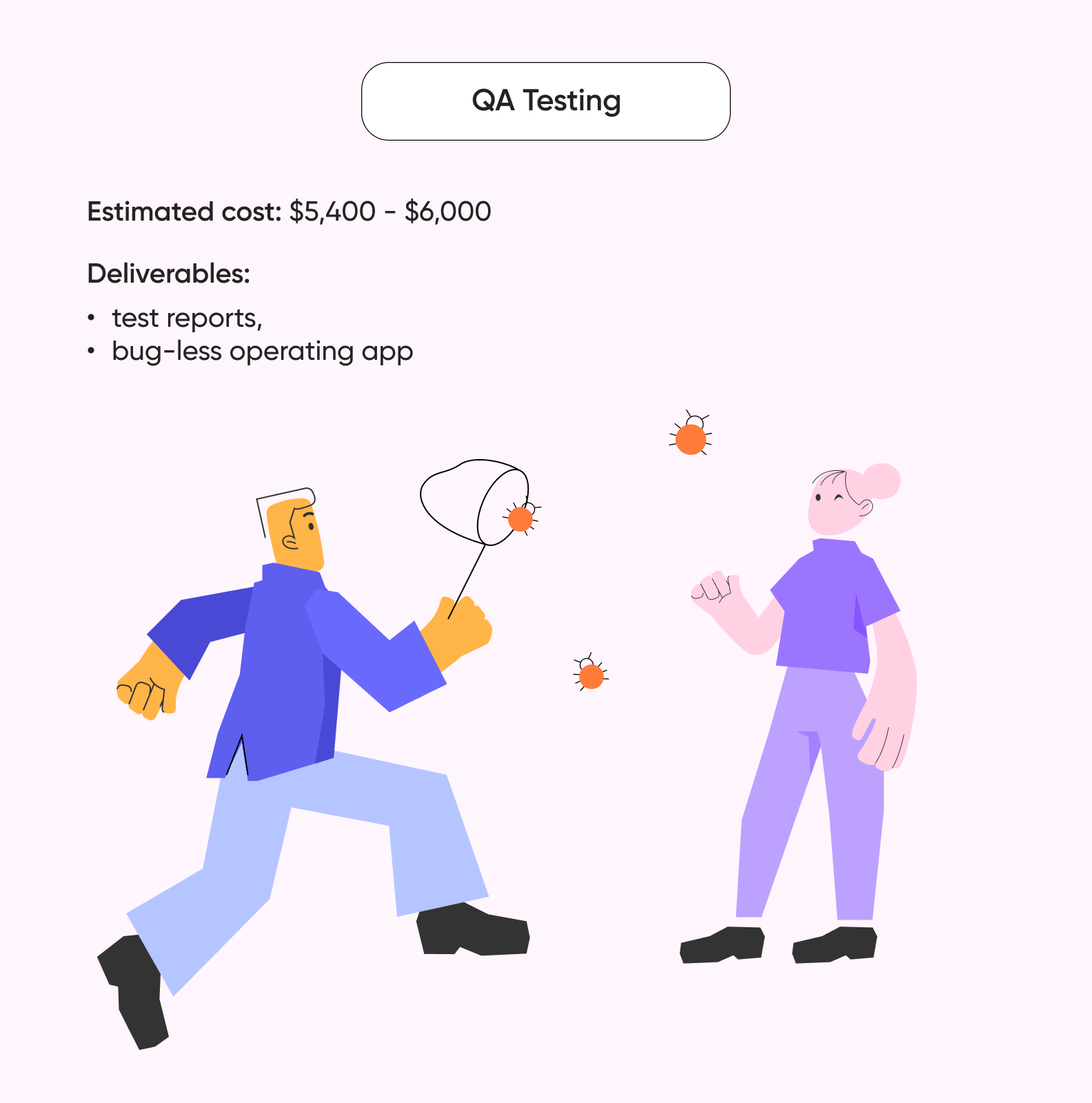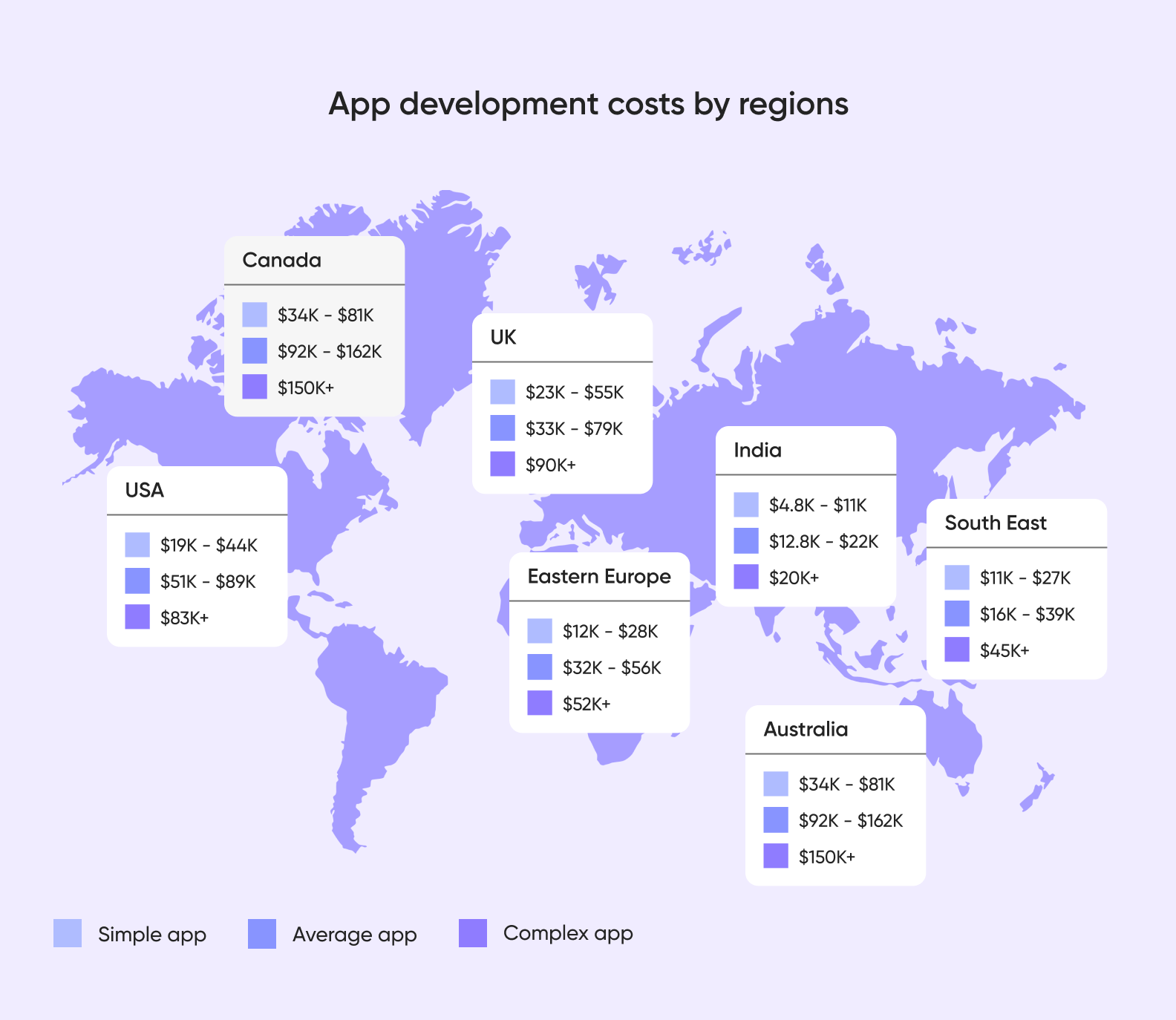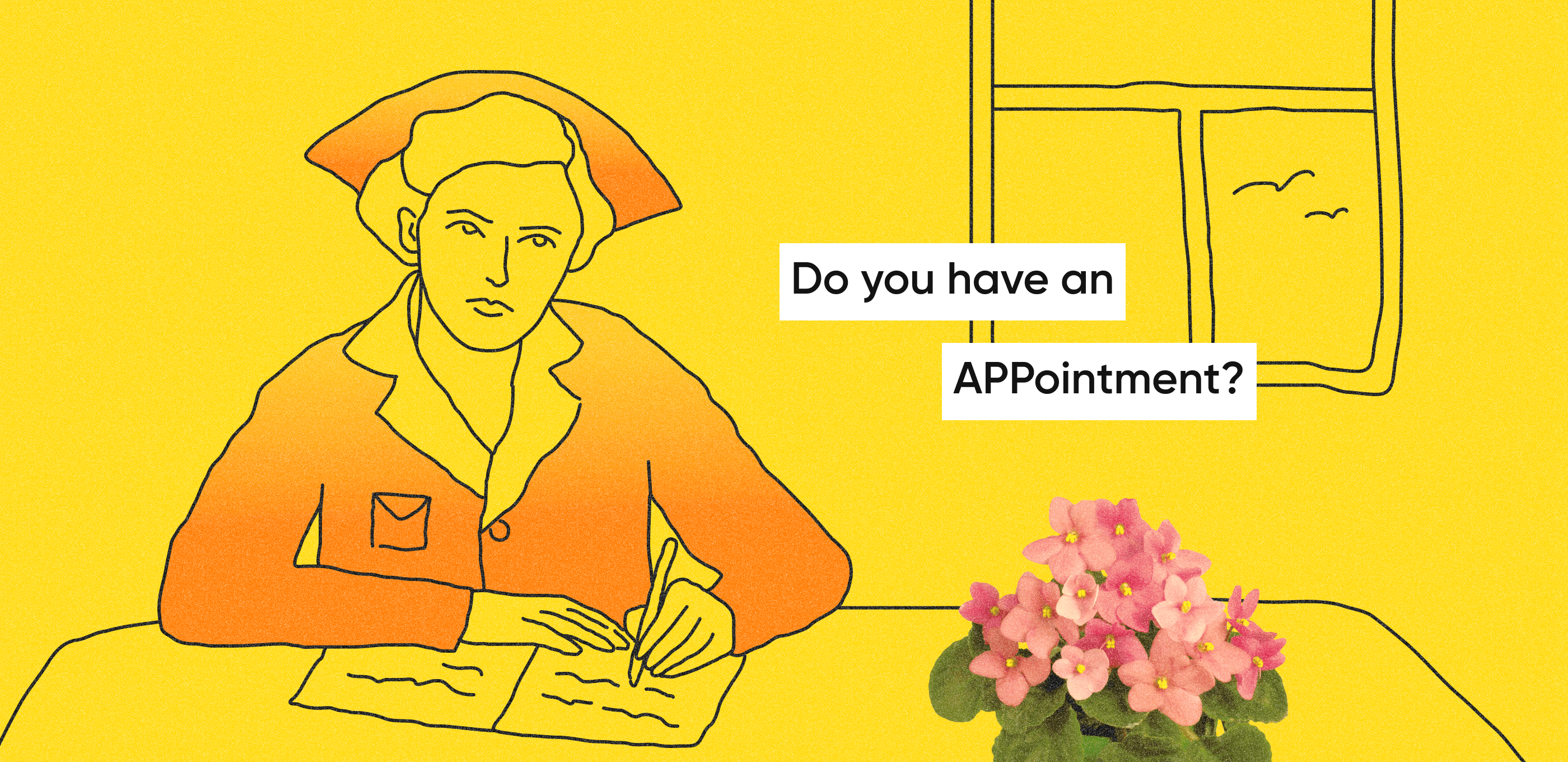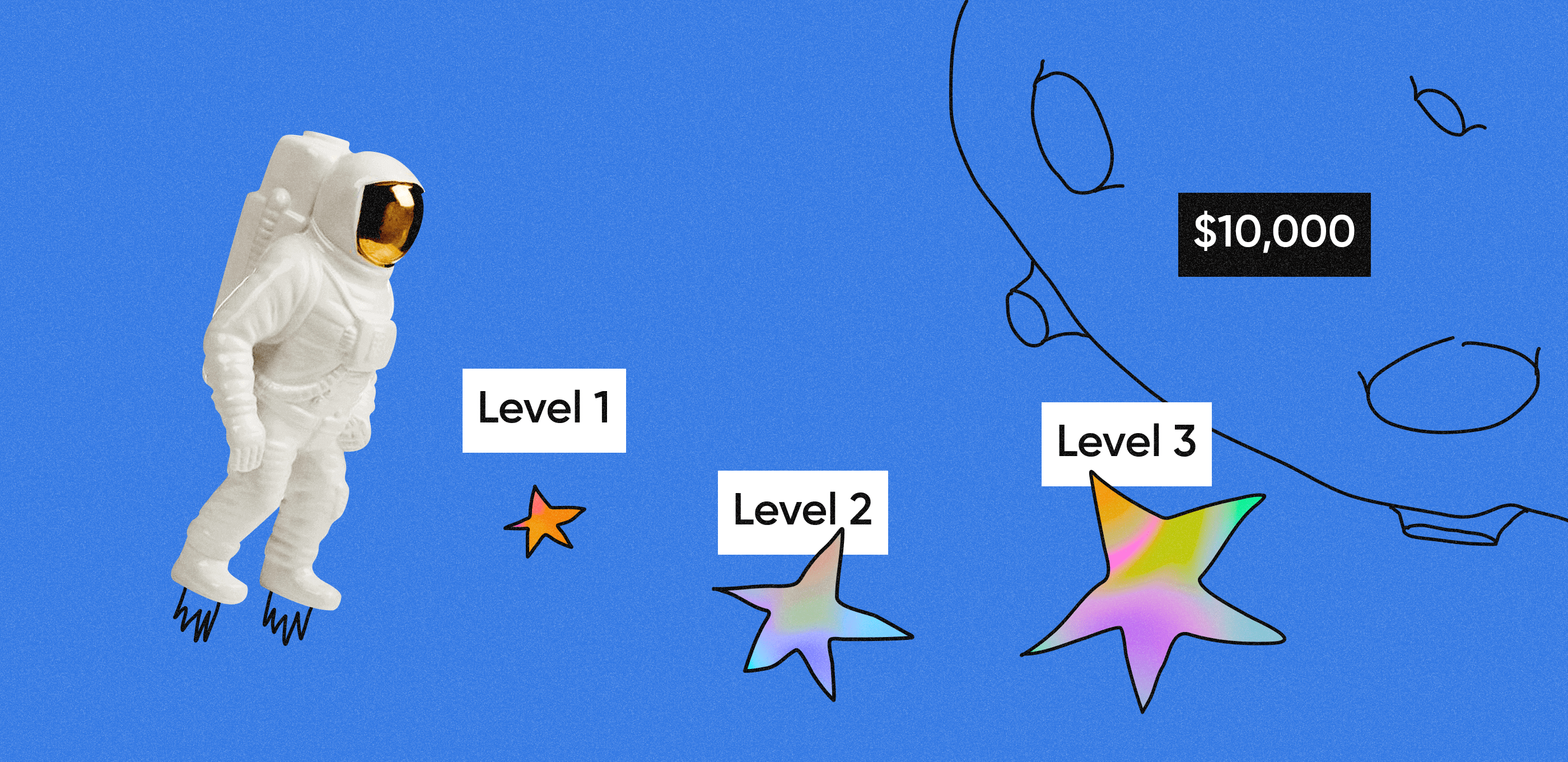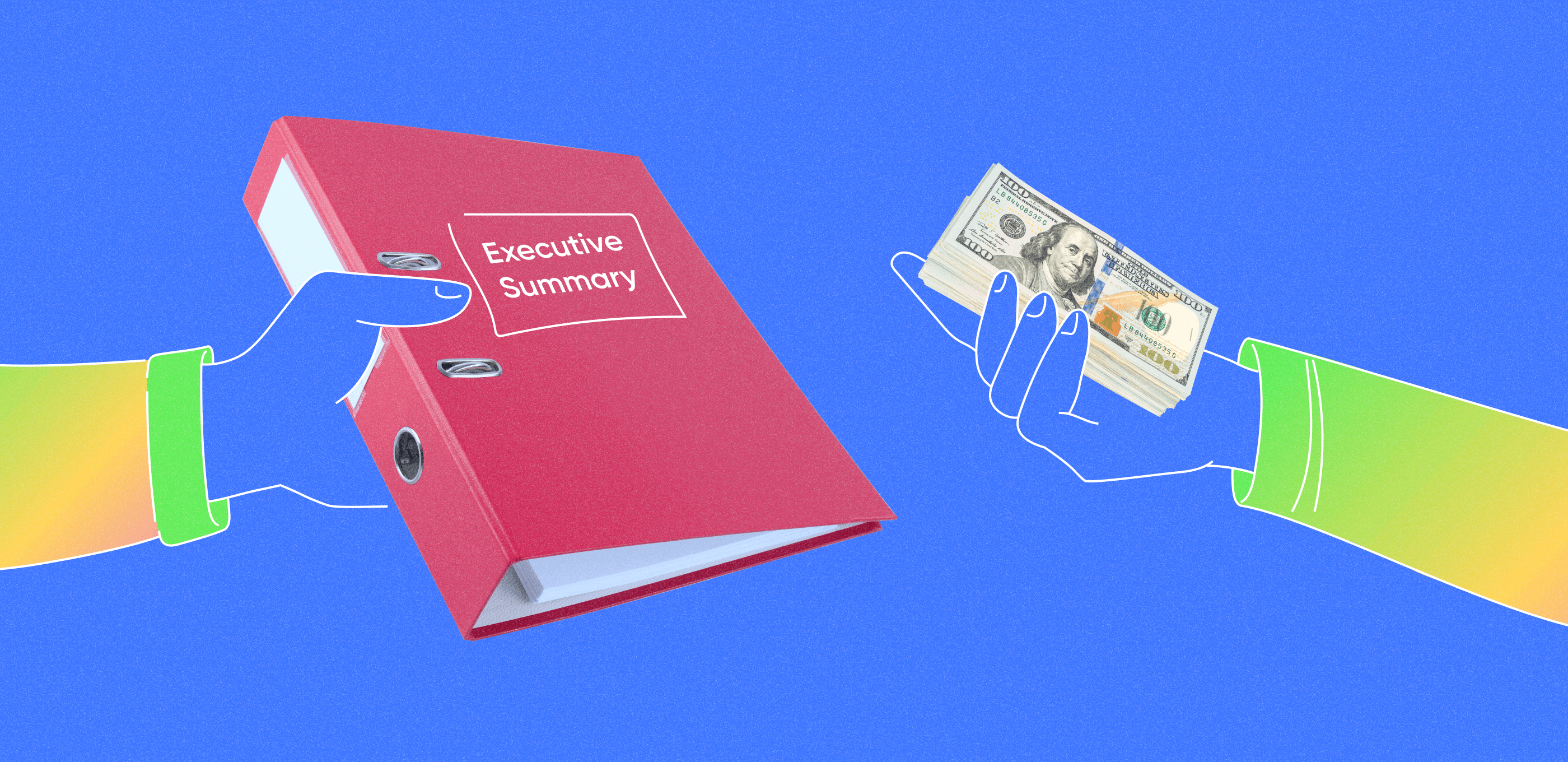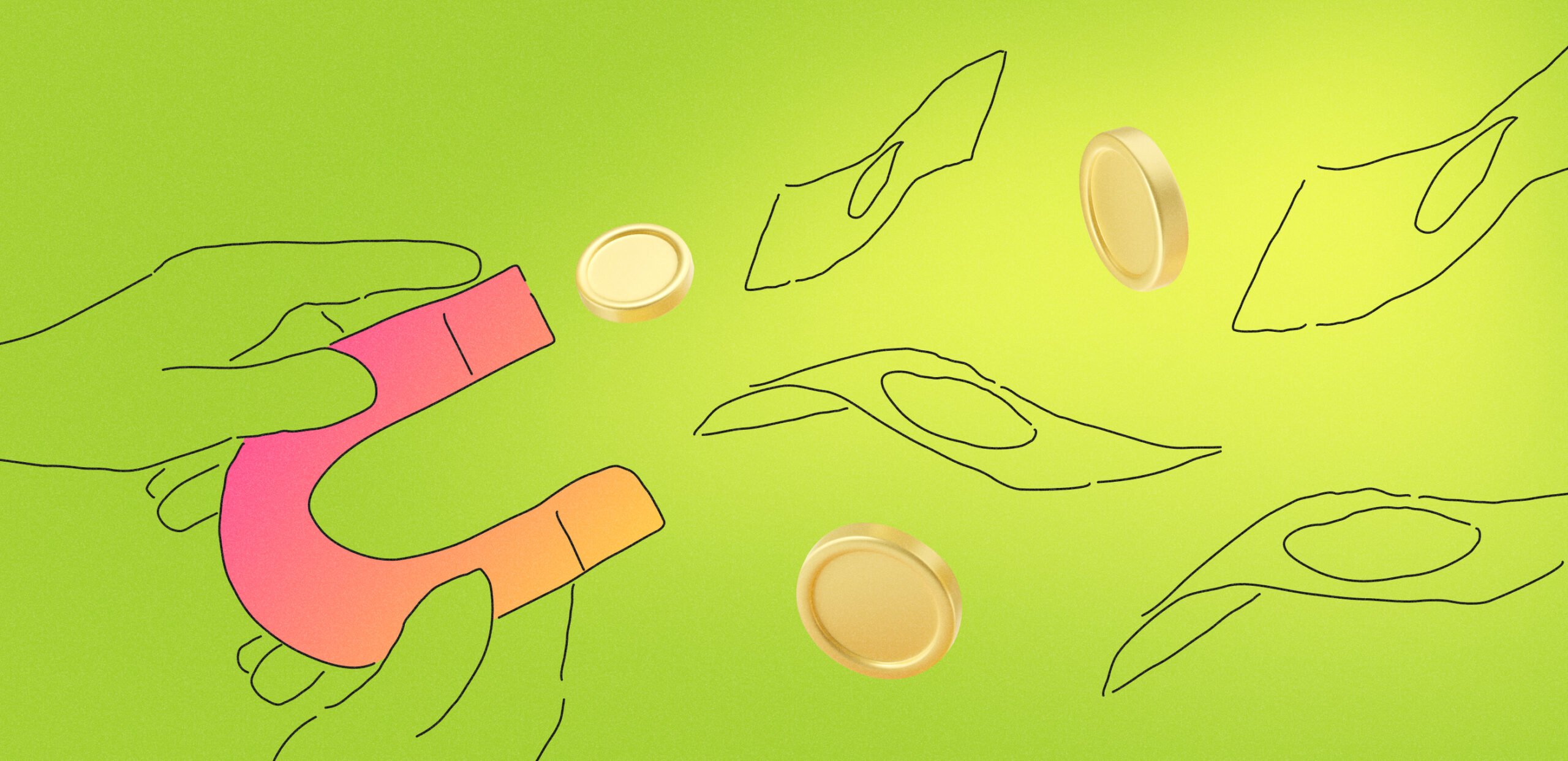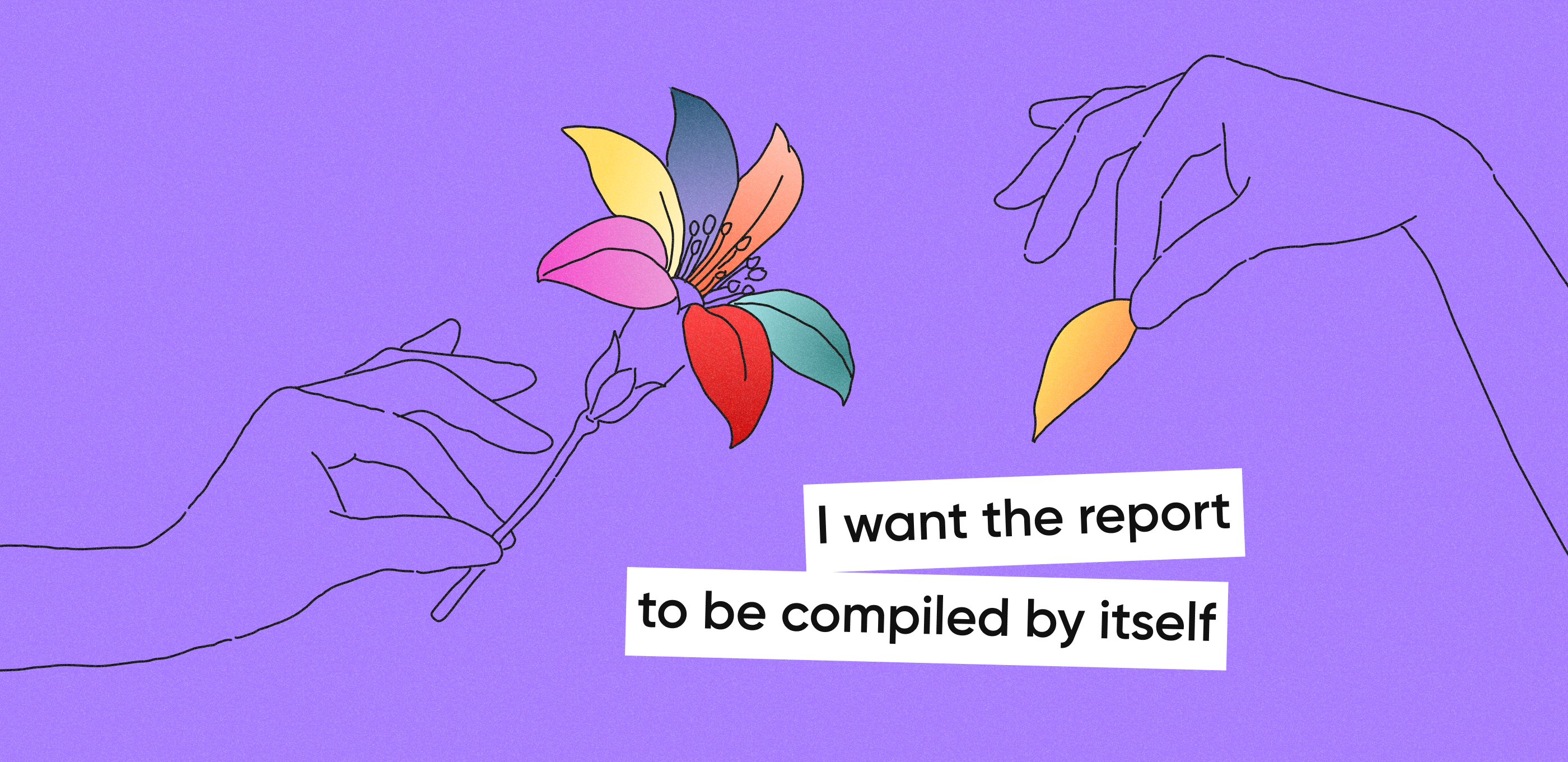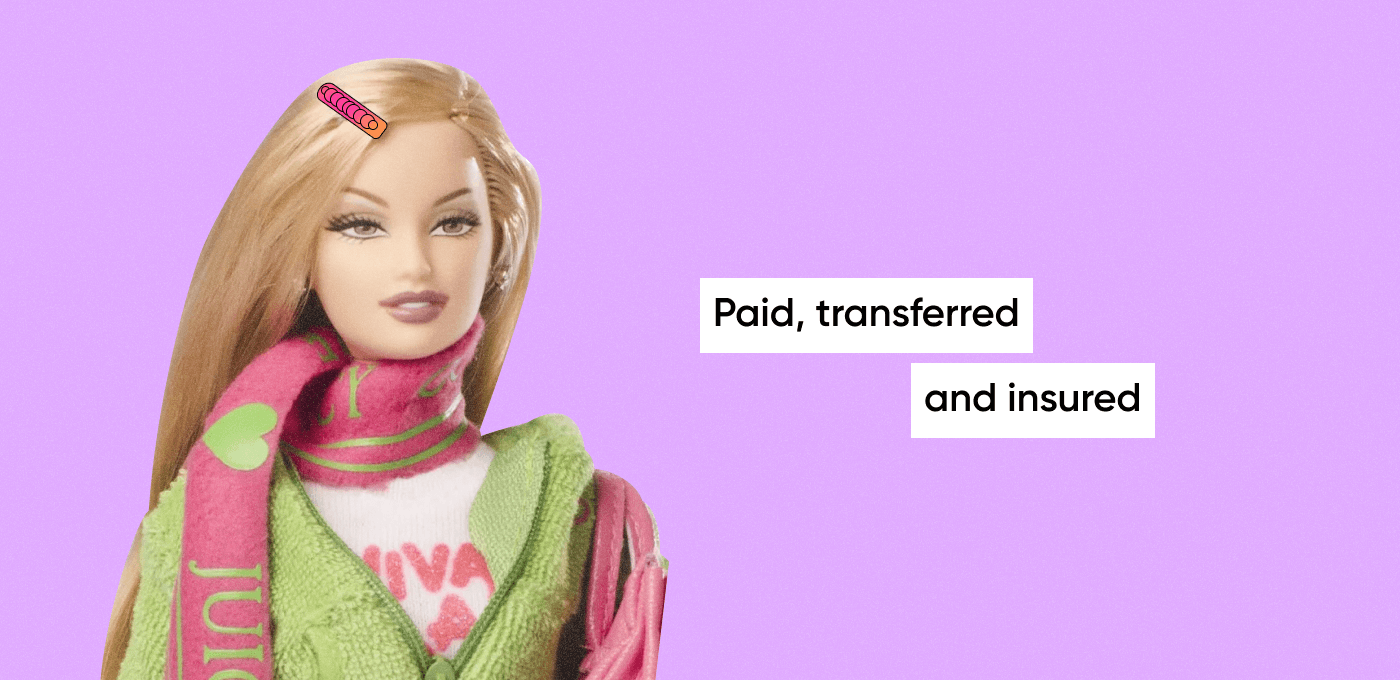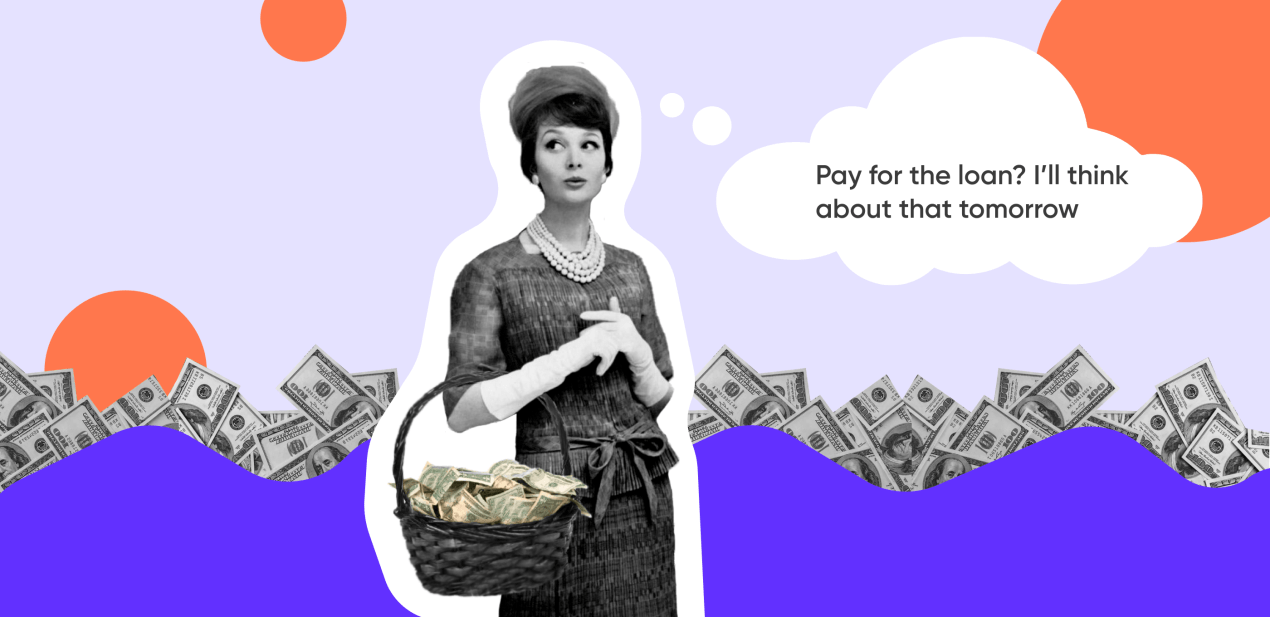Key takeaways
-
- It costs between $100,000 and $185,000 to develop an app similar to Uber, Instagram, or WhatsApp.
- The stages of the app development process are: project analysis, UI/UX design, app development, QA testing and release.
- To decrease your app development budget, think about creating a cross-platform MVP app.
- You will need approximately $56,000 and around 4 months to create your own basic functionality app.
How much does it cost to make an app on average?
Apps come in different sizes — while providing a single number is possible, it oversimplifies things. So let’s take a look at some of the most common types of apps first: simple apps, average-complexity apps, and complex apps.
A simple app means an application with basic features and a standard template-based UI (user interface). Think of brochure type apps, maps or GPS trackers as an example.
For example, we created a medicine delivery app with a clean, neutral design and clear user flow. We also chose not to add complicated animations, elaborate color palettes, and needless flourishes. The app has a standard layout and minimalistic design, and it doesn’t need much more to be adored by clients. That’s why, in this case, the cost of app development was lower.

We stuck with what works: simple familiar design elements. As a result, we managed to lower the overall app development cost without sacrificing the visual look.
An average-complexity app is more elaborate both in functionality and design. The examples range here is wider, as most of the apps in App Store or Google Play belong to this category. Social networking, fitness, photo editing apps of an average-complexity constantly enter the market.
At Purrweb, we have a lot of experience working with medium-complexity apps. One case is Breath Method, an app centered on meditation and breathing practices. During the design stage, we integrated photos, added animations, and generated a peaceful color scheme, all so that the app projects a sense of calm and tranquility.
Also, we added features like Face ID and audio lessons, which we usually wouldn’t add in “simple” apps. That’s why its mobile app development cost was higher.
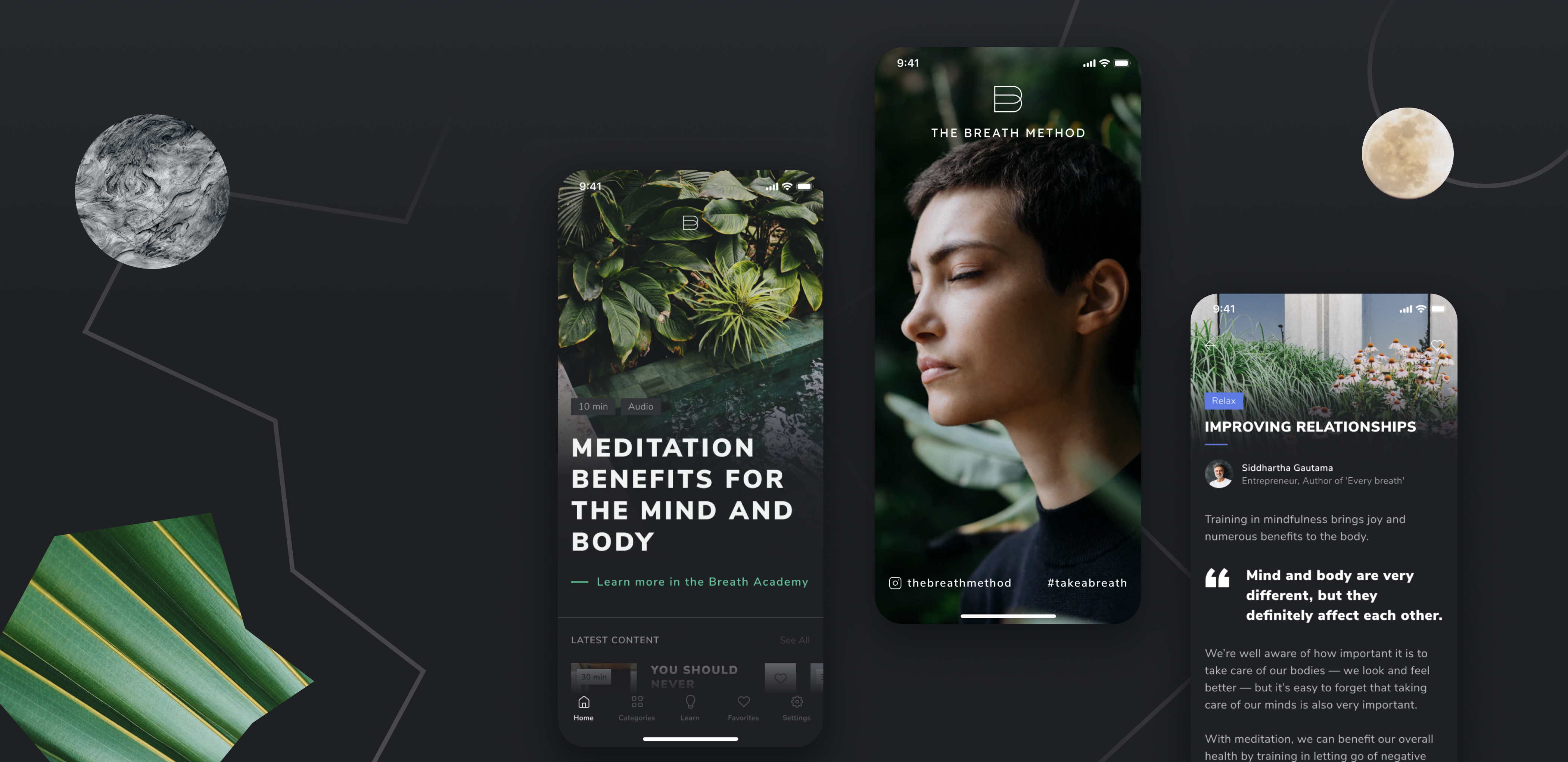
Due to the nature of the project and the steeper app development cost, we were able to integrate unique animations and unorthodox features
Complex app means a fully customized application, packed with complicated up-to-date features and an elaborate UI. It can contain new functionalities that were never used before and are developed from scratch. The spending in this case literally has no limit. 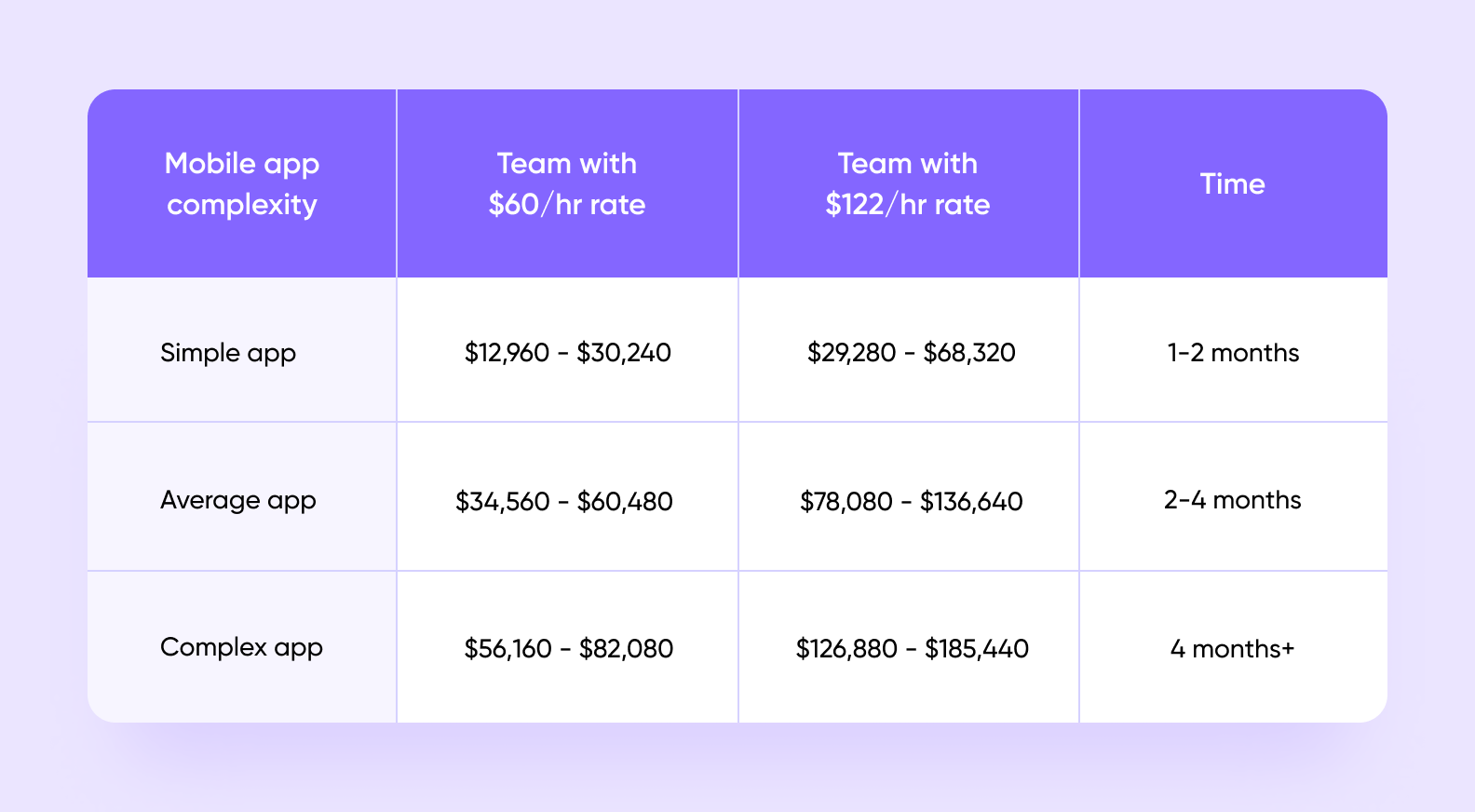 Numbers are based on Goodfirms survey.
Numbers are based on Goodfirms survey.
Depending on the number of features, the app developers involved and the desired functionality, the app development cost can go over a hundred thousand dollars.
The app development cost of applications like Uber, Instagram, or WhatsApp is $100,000 – $185,000, not to mention millions of dollars spent through the years on research, marketing and maintenance.
How much does it cost to develop an app? Cost breakdown
Here’s Purrweb’s app development cost breakdown. Bear in mind that these are approximate numbers — we based them on our calculation of a fitness app that has basic functionality. Read further and you will get the idea of how and why they may vary.
| Stage | Estimation in weeks | Approximate costs |
| Project analysis | 1 | $1,000 |
| UI/UX design | 4 | $5,400 |
| App development | 9 – 10 | $36,000 – $40,500 |
| QA Testing | concurrently with the development | $5,400 – $6,000 |
| Project management | during the whole project | $3,950 – $4,100 |
Overall, you will need approximately $56,000 to create your own basic functionality app, and the application development process will take 920 – 1020 hours, or around 4 months. If you want more accurate figures, contact us using the form below — our manager will contact you and provide an estimate in 48 hours.
If you need another example of an app development cost breakdown, take a look at our restaurant order management application Grecha: we built an MVP in 3,5 months, which cost $47,640.

Grecha is an app for restaurants — owners can contact suppliers and order goods for their businesses
Stage 1. Project analysis — $1,000
About a decade ago, every business dreamed of creating an app just for the sake of having one. Startups were more concerned with what they COULD do, and not WHY should they do it, so the project analysis stage, or the discovery stage, was frequently underestimated.
Even now, according to a Clutch survey, only 70% of clients go through the project analysis stage with their development team. However, the mobile app market is highly competitive, so the decision to eliminate the first stage can only lead to reputational and financial losses.
As you can see in our own Purrweb’s breakdown, the average cost of this stage is relatively low. Yet it can save thousands of dollars in the future.
So, what are we doing on Stage 1?
Researching the market. This is an essential step to determine if there’s any product-market fit for your app idea. At this stage, we determine just how big the market is and examine overall trends. Also, we conduct competitor analysis to get inspiration and understand where others excel or fall short.
Features prioritization. Now, if there’s a market for your idea, we brainstorm the prioritized list of the main features for your app. Then, our system analyst works with the client to determine what features contribute to delivering the core value proposition. Also, the features have to address the needs of our potential users. Thanks to that, we can figure out which features are a must and which can be omitted for the time being and should be done at the latter iterations.
Calculating app development costs. We break down development into several stages: project analysis, UX design, development, and QA testing. Each stage takes a certain amount of time to complete. We take this data, calculate the approximate timeframes, and multiply it by our hourly rate. This way, we can accurately figure out the pricing.
Stage 2. UI/UX design — $5,400
Now, when you have a blueprint for an app, it’s time to design it. Cost of UI/UX design may vary depending on the number of screens your app has and the designer you choose. You can also face additional expenses if you change the functionality of the app.
What is happening on Stage 2?
Creating a mind map. We take each feature we singled out and make up a mind map that outlines the key user journey. It looks like a diagram. In it, the designer visualizes the navigation between different parts, content, and features of the app. We present our mind maps in the form of a Miro file.
Fleshing out wireframes and a design concept. Once clients approve the mind map, we begin working on the design. The process starts with wireframes, we create black-and-white screens of the app. These sketch-like renditions show us how we can position features, buttons, icons, and content on a given screen. After we finish creating wireframes, we choose three of them and turn them into a design concept to showcase the final visual look.
Designing the whole app. After our client greenlights our design concept, we start designing every screen the app will need. While not the hardest part of development, it takes a lot of attention to detail and specialized knowledge to make sure that your app is consistent throughout every frame.
Assembling a UI kit. After our client greenlights our design concept, we collect every design asset we make and compile them into a UI kit. It’s a file that simplifies development and updates in the long run. That’s because UI kits store not only the design elements themselves, but also their representation in code. Developers can simply copy and paste the properties of any design asset and speed up the coding process.
Stage 3. App development stage — $36,000
This stage is the longest and the most costly. Mobile app development team brings designer’s mockups to life.
The app development costs here depend mainly on 2 factors. The first one is the number of platforms you choose for your mobile app development project — iOS, Android or both.
If you want to save money and time, go for cross-platform development. It works mainly on the React Native framework, which allows sharing the code between Android and iOS apps. Thus, your app appears on both platforms with the help of only one app developers’ team.
The second factor is the number of features and app complexity. Simple features, such as push-notifications and user reviews, tend to cost less, whilst more elaborate ones, such as payment systems development, can be really expensive. We’ll take a look at them in depth later.
What is happening on Stage 3?
Working in Agile sprints. We’ve been developing apps for over 9 years. We spent a lot of this time perfecting our development process, and incorporating Agile sprints proved to be one of the best choices we made.
Essentially, we pick out a single feature for a 2-week sprint. You get a demo at the end of each sprint, ensuring that everything goes as planned, while you keep getting the intermediate results of the development process. During that time, we develop it from start to finish. This way, we always meet our deadlines.
Creating the app itself. Our developers combine finished features into a functional product. We use different tools to create the app, e.g. React Native to make a single hybrid app that works on both Android and iOS, or AWS to store the backend portion of the app in a cloud server.
Stage 4. QA Testing — $5,400
Every time the development team builds a new feature, QA engineers start searching for bugs, so that programmers can fix it.
The cost of QA testing is approximately 30% of the app development cost. Though, bear in mind that maintaining an app is not a one time task. After development, every application needs post-release continuous support.
Here’s what’s happening at this stage:
Testing the app for unexpected errors. Our QA engineers go through every common scenario that the user may encounter.
If we’re talking about a marketplace app, for example, the QA specialist would try to sign up, add some items to a cart, and place an order online. After that, our specialists use automated tools to try and break the app in the most unconventional ways. This ensures that even if the user mistypes some info or does something not intended by the app, they still won’t encounter bugs or crashes.
Stage 5. Release and maintenance — from $10,000
The app release doesn’t mark the end of the development process. Here are some other things we do to make the app even more successful:
Ensuring the app adheres to stores’ guidelines. Sometimes, the App Store or the Google Play Market refuse to release the app on murky legal grounds or due to other internal factors. We try our best to underline some nuances to you, mitigate potential pitfalls, and actually release the app.
Updating the app. Our specialists collect crucial feedback from first users. It includes info on unexpected glitches, suggestions for future features, and more. After that, we begin implementing their feedback in new iterations of the app. We account for the resulting app maintenance cost in our initial price estimations.
Worldwide hourly rates
Now that we’ve revealed Purrweb’s estimation, as well as the average cost of developing an app worldwide, let’s see how things break down in specific geographical regions.
We mentioned that one of the factors that influences the cost of building an app is the number of platforms you wish to cover.
An app development company’s location is also important. Hiring specialists from countries with low market prices for mobile development can significantly reduce the cost of creating an app. Consider this option if you’re ready to take the overseas communicational risks.
Take a look at some mobile app developer rates by country — they’re calculated on an hourly basis:
| Region | iOS
(Avg. $/Hr) |
Android
(Avg. $/Hr) |
Cross-Platform
(Avg. $/Hr) |
| Canada | 90 – 120 | 80 – 140 | 90 – 120 |
| USA | 60 – 120 | 60 – 120 | 60 – 130 |
| Latin America | 28 – 90 | 28 – 90 | 40 – 160 |
| UK | 60 – 75 | 60 – 75 | 55 – 75 |
| Europe | 35 – 55 | 35 – 55 | 30 – 50 |
| Ukraine | 40 – 78 | 38 – 60 | 40 – 78 |
| South Africa | 45 – 80 | 40 – 80 | 40 – 80 |
| India | 22 – 90 | 15 – 25 | 20 – 30 |
| Southeast Asia | 23 – 55 | 30 – 45 | 30 – 45 |
| Asia | 25 – 35 | 20 – 30 | 25 – 35 |
| Australia | 90 – 120 | 100 – 120 | 90 – 120 |
If you want a more descriptive example, take a look at a map with rate estimates.
App features — implementation cost
There are other ways to calculate app development cost outside of looking at their types. Some features have a small app development budget of their own. We’ll provide 4 examples of the most frequently requested app features so you’ll get to understand their general purpose and price.
Push Notifications — $3 320
This feature allows you to stay connected to your audience. Each time you send a notification to your user, they get reminded of you and your app — it’s a great way to lure users in.
Another benefit of push notifications is increased user retention. You can use this feature to introduce new features and offer some benefits or bonuses to your users. This increases the chances of them opening your app and doing what you want them to.
Dashboard — $7 750
This feature offers a convenient way to look at data important for users. In the case of a financial app, dashboards help track expenses and distinguish spending patterns. And if we’re talking about a healthcare app, a feature like this can show the calories burned or the time you spent on a workout in the form of a diagram.

Users of an HR-platform can look at a dashboard and quickly grasp how many applications they gathered
User profile — $4 480
Many apps base their selling points on customization. Personalizing the type of content you can view and other settings in the product is impossible without user profiles. They typically have all the necessary information about the user: name, phone number, avatar, etc.
The look and focus of user profiles depends on the type of app they’re in. For example, some apps make the avatars larger — e.g. dating apps. Other apps, like review aggregators, make sure to highlight the user’s previous reviews.
Geolocation — $3,900
Many apps include features like maps, location tracking, route planning, and so on. For the app to analyze GPS coordinates and receive satellite data, you’ll have to integrate a separate geolocation feature. With it, the app will be able to scrape info on traffic and road work, so users can enjoy multi-stop routing and accurate ToA (time of arrival) predictions.

In Apple Maps, users can efficiently plan their commute without much effort. All they have to do is type in the place where they’re heading, and the app does the rest
Signup — $4,900
This feature is important to include for security reasons. If we’re talking about marketplaces, for example, it allows us to store sensitive data like credit card info without the risk of showing it to the wrong user. And if we focus on real estate apps, making users leave their email addresses lets you send them personalized real estate deals. In turn, there’ll be a higher chance that they become a regular paying user.
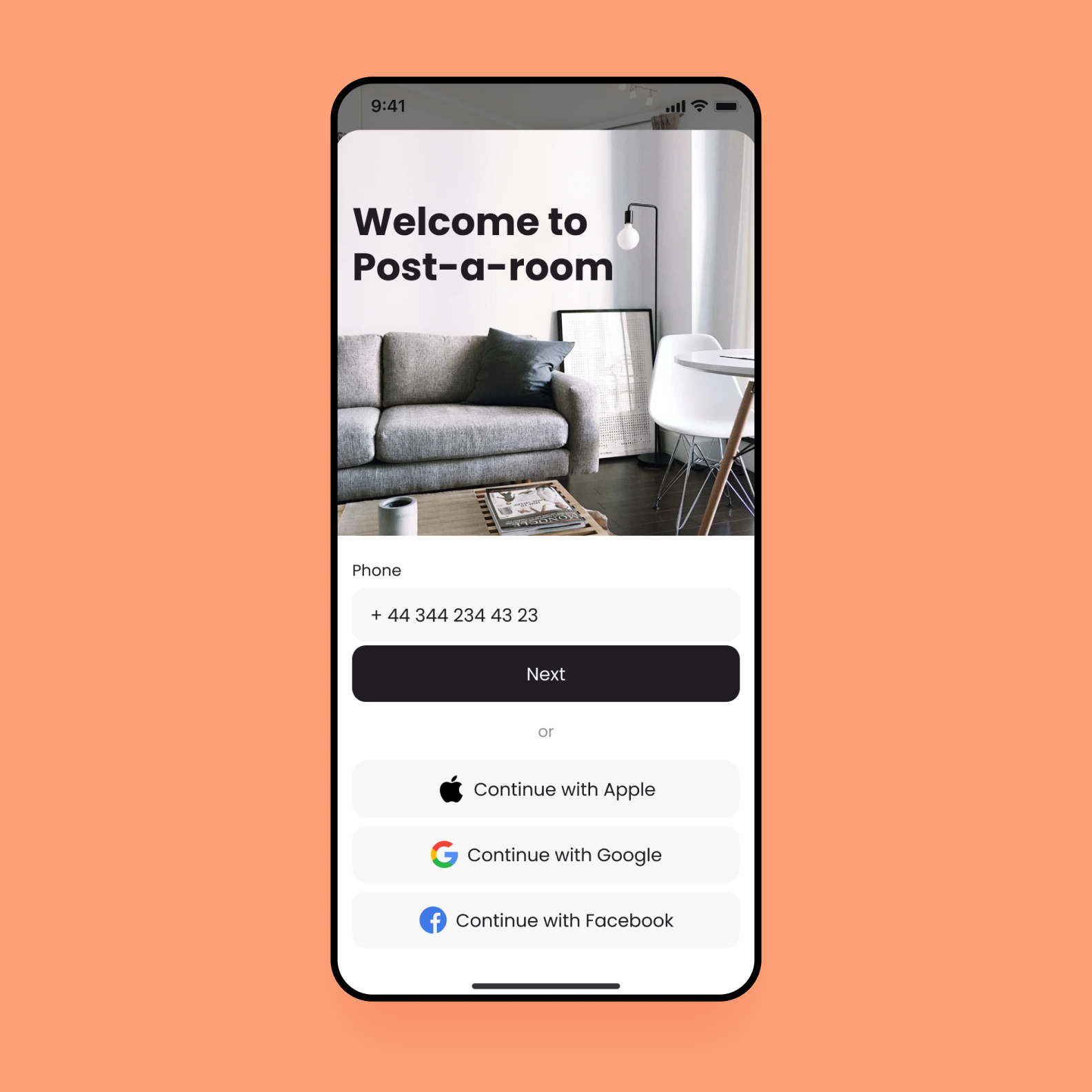
Speaking about signups, try to shift your attention to UX when integrating registration into your app. Customers dislike it when the process drags on.
In-app chat — $15,700
It’s an excellent feature that’s a must-have for almost any app. Planning to develop an enterprise app? Chats are crucial, as they streamline communication between work colleagues and entire teams within a company. Want to build a dating app? Without chats, it’s almost entirely meaningless. In-app chats are essential, and their ability to improve the quality and usability of any app can’t be understated.

In-app chats allow for seamless, straightforward communication, something a majority of users need in any app
Calendar — $8 330
A feature present in a lot of apps, for many different reasons. For instance, healthcare apps use calendars to tell users their exact medication schedule or the date of the next doctor’s appointment. Fitness apps use it to show past and future workout sessions. This feature is very versatile.
Financial transactions — $4 270
One of the most common monetization models is a premium subscription. A lot of apps hide additional features behind a paywall. If a service is good enough, users still buy a subscription — no matter how inconvenient it may seem.
Getting a payment module to work and collecting personal data like card numbers require a separate feature — financial transactions. This feature makes earning money from a product much easier. Without financial transactions, subscriptions are impossible to implement in an app.
Examples of app development cost
We guess you’ve already compared your future app with existing ones, so we have gathered some information on app development costs of famous applications.
Revolut: $126,500
This banking app has over 20 million active users, 950 thousand of which are SMEs. Revolut covers 52 countries and offers various services that help users manage, invest, borrow, and protect their money. On the other hand, SMEs also find the app incredibly useful for handling mobile transactions, managing accounts, and minimizing overhead.
In the app, you can create multi-currency accounts, track expenses and income, set savings goals, and much more. While these features may seem strictly utilitarian, Revolut manages to make them more engaging through pleasing aesthetics and a logical, clear-cut user flow.
Tinder: $102,688
This social dating app recognizes the user’s location and offers profiles of matching users based on this. The signature feature of Tinder is swiping — users can like or dislike profiles by swiping them left or right. What else is hidden in Tinder’s code? It’s Facebook or phone number login, unlimited messaging, video chat, search filters and securing users’ profile.
Instagram: $143,728
A feature-rich app that not only allows users to post and edit their photos and videos, but provides tons of other functions. Live videos and IGTV, direct messaging and in-app phone calls, searching, following and blocking users. There’s also a built-in shopping feature and special account settings for businesses.
Uber: $152,776
The main feature behind the Uber app is recognizing locations of the user and available drivers, connecting the two and following the ride in real-time up to the destination point. Other interesting features here are rating system, live chat, different payment options and accessing user’s orders history.
WhatsApp: $184,512
The messenger lets users share texts, pictures, videos, audios and geo-locations, either one-on-one or in group chats. End-to-end encryption feature makes the app valued by the users, highlighting users’ interest in apps that give consideration to their security levels.
How much does it cost to hire a developer?
The app development cost depends on a variety of factors. For example, the types of partnerships you’re going to pursue: outsourcing, outstaffing, and hiring a full-time in-house team. Let’s take a look at their differences first:
| In-house teams | Outstaffing | Outsourcing | |
| Maintenance costs | High | Lower than in-house teams | Lower than in-house teams |
| Onboarding staff | Yes | Yes | No |
| Operating effectively under time constraints | Not guaranteed | Yes | Yes |
| Fully delegating a project | No, you’ll have to guide your team and track their progress | No, it requires additional management | Yes, the agency can make it from the ground up |
In-house teams. In this case, you’ll have to find developers and oversee the entire process on your own. Finding the right people for the job is no easy feat and may take 4–5 months. In other words, you could spend as much time searching for the perfect candidate as you could developing an app from the ground up with outsourcing. Also, hiring in-house teams raises the cost of app development because you’ll have to pay additional benefits and taxes.
Outstaffing. It’s a great choice if you already have developers who are busy with other projects. In outstaffing, you “rent” employees from an agency to help you release an app or streamline your day-to-day operation. It’s a decent option if you’re out of time or have some other constraints. Like, if you can only accommodate a certain number of employees. Thanks to outstaffing, you can get experienced developers that will seamlessly integrate into your work processes.
Outsourcing. It’s an option that strikes a balance between app development costs and quality. Essentially, you outsource development to app development companies that are experienced in your niche. They’ll take the reins of the process, and all that’s left for you to do is check on their progress.
After you choose a provider, they’ll calculate the development and app maintenance costs themselves.
The developer analyzes how much time implementing each feature is going to take. They then multiply the estimated timeframe by their hourly rate.
As we previously mentioned, the business analyst calculates how much time it will take to design and develop each feature. If we’re talking about design, they identify the number of hours it takes to create a mind map, draw up wireframes, and address how a feature works in different cases. As for development, the business analyst estimates the timeframe for coding and QA testing.
Then, the resulting timeframe is multiplied by an agency’s hourly rate. An approximate estimation breakdown looks like this:
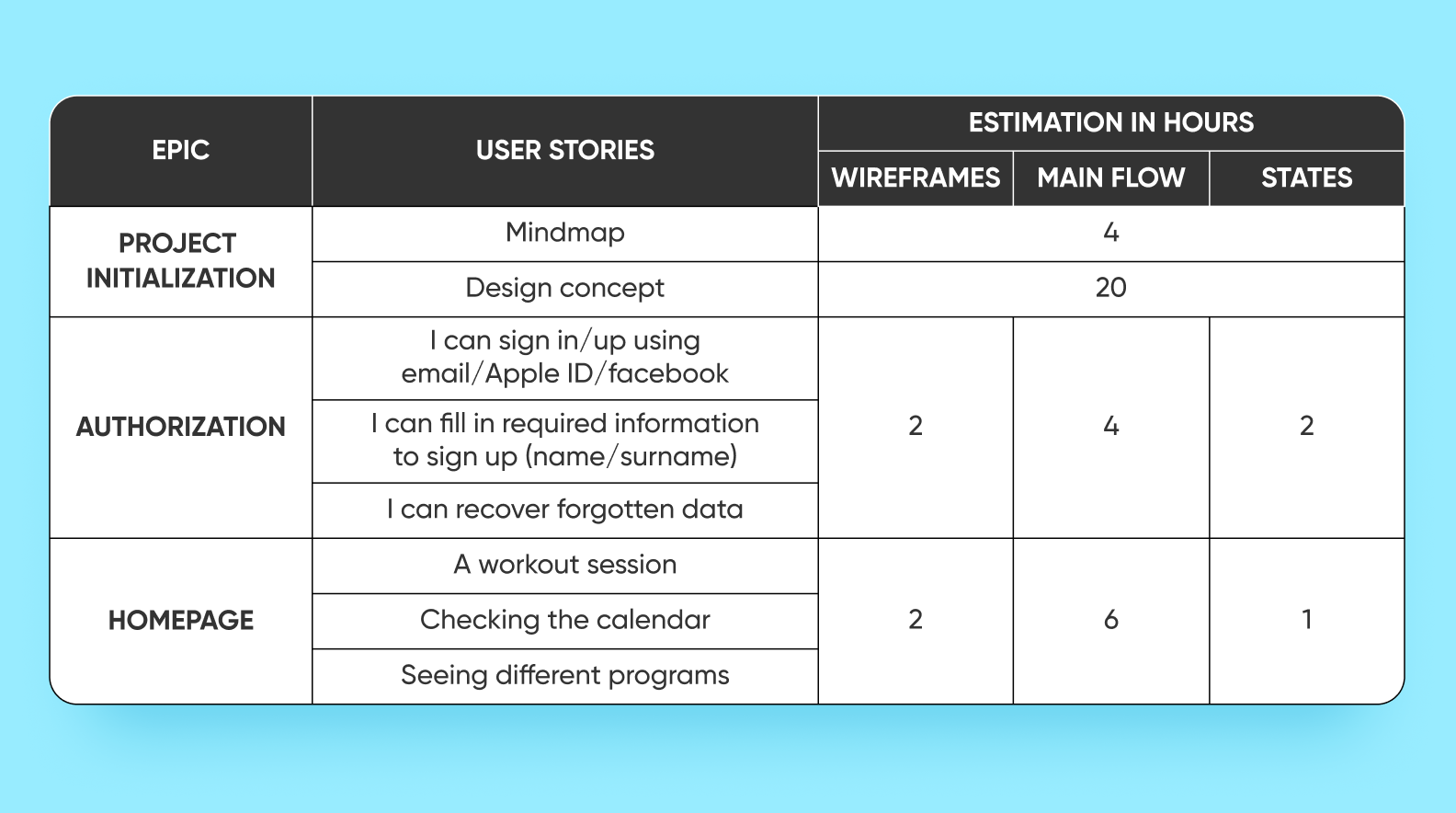
Speaking about design, the business analyst outlines how much time creating each feature is going to take. This includes epics, or the description of a feature in broad strokes, and stories, or particular actions the user can take in the app.
Estimate cost of apps by their type: 8 examples
Different types of applications require developing different logic and features. Let’s take a closer look at 8 app types and learn their cost grounding.
Lifestyle apps
Users open these apps every day. They literally become their virtual buddies, counting their calories, putting on favorite music and helping to choose the best restaurant for dinner. An app will become indispensable if it is linked to other software the customer is using.
We had this idea in mind when we developed a mental health app Breathmethod, which has Face ID sign-in for user convenience and Instagram post integration that compliments the impeccable design with an individual approach.
Estimated cost: $40 000 to $50 000
Social media apps
The main goal of a social media app lies in its name. The features that are crucial are creating and sharing media content. Social media apps should be fast, have a responsive design and frequent updates, so that no bugs ruin the user’s experience.
If you want to know how to make an app like Instagram, check out our article.
When we made a social travel platform TripChron, we focused on giving users the opportunity to share their travel routes and follow other enthusiasts.
Estimated cost: $55 000 to $65 000
Educational apps
Online education market is growing rapidly. Users learn foreign languages, get certificates in new professions and pass exams online. What features help them achieve their goals?
In iZumator, the platform for online education developed by Purrweb, we made a range of roles with different access. Student, mentor, assistant, admin and supervisor each have their own pack of features (such as viewing courses, creating groups, and checking homework).
Estimated cost: $60 000 to $70 000
Fitness and productivity apps
These apps are indispensable when they really help the user get their job done. The most important features here can be a desktop version, integration with basic utilities such as a calendar, phone book or a GPS-tracker.
Check our FitForce.com app that helps fitness trainers achieve their professional goals. The app can schedule their sessions, manage invoices, and track their clients’ success via phone or computer. It even has a chat-bot!
Estimated cost: $40 000 to $50 000
Professional apps
Professional platforms are tools making the work simpler by providing certain functions that otherwise users would have to do manually. This app needs administrative features: reminders, push-up notifications, calendar and group work chat.
The online psychotherapy app is an example of a highly effective professional platform that we’ve built. The features kit depends on the account type. Patients have a chat-bot and surveys that can help them find a suitable therapist. Meanwhile, specialists have features that allow them to manage their workload and invoices.
Estimated cost: $55 000 to $65 000
HoReCa
The goal of a HoReCa mobile app is to simplify interaction between guests and staff. An app logic should be smooth and transparent as there are often a lot of users involved — both on guest’s and on the owner’s side. For example, customer’s accounts should show a restaurant menu. Waiters’ accounts should display current orders. And supply managers should see the amount of products left. All these better not be mixed up.
When we created NoTab, an independent ecosystem for nightclubs, we focused on dividing the roles to make an app-kit more effective. Admin, kitchen, staff and guests each got their own platform and a separate number of features.
Estimated cost: $50 000 to $60 000
Fintech
Finance is a sphere where both a vendor and a user want to feel secure. When planning main features of a Fintech app, think of beginners who are being cautious in a new ecosystem, being concerned they could lose their money, if the app looks too confusing.
When we developed a multi-currency crypto wallet Broex our goal was to make an easy-to-use tool with intuitive design, navigation, and interface patterns familiar to most users. The created app turned out to be clear and user-friendly, which is a must for a Fintech startup.
Estimated cost: $75 000 to $85 000
E-Commerce
When you buy something online, you have a product catalog, a shopping cart, and a list of delivery options. What makes an e-commerce app effective is the additional services — push-notifications that will remind the user of their order, parcel tracker and secure payments.
In our pharmacy app, we ensured that the payment process requires only one tap to proceed even for not logged in guests.
Estimated cost: $40 000 to $50 000
Factors that affect app costs
Types of apps aside, there are specific aspects of development and design that influence the app development budget. Let’s take a closer look at 4 of them:
Number of features
The more features in an app, the more it will cost — that’s because app developers have to take more time to create and implement the features.
Let’s take a look at a more hands-on example — we created an app for pet owners and an ecosystem for nightclubs which we already mentioned. Their prices differ because of the number of features — the ecosystem has way more.
| PetBuddy for pet care | NoTab nightclub ecosystem |
| 1 user role: dog or cat owners | 5 user roles: e.g. waiters, kitchen staff, admins, dancers, and guests |
| 1 user flow, basic features — costs less | 5 user flows — costs more |

The nightclub ecosystem has 5 user roles, each of them — its own unique features. It took more time and cost more
Feature complexity
The number of features isn’t the only factor. Not all features are made equal — some are more complex than others. Think of an e-learning app, for instance. How do you motivate users to open the product and engage in lessons? There are two ways:
-
- You can show a success screen that simply says “Good job!” and urges the user to continue.
- Or integrate gamification with progress trackers, storylines, and game characters.
The app based on gamification requires additional screens, time, and resources to map out its logic, so it ends up costing more.

Duolingo is an app with intricate reward systems, goals, and badges. Designing them takes more time than creating a single screen, so it’s more expensive
Complexity of design
Certain design elements can end up demanding more resources in the long run. Creating a simple header is different from a unique button with animations and separate states. Take a look at some of the differences between cheap and expensive design elements.
| A design feature | Cheap design | Expensive design |
| Icons, images, buttons | Reused or bought from elsewhere | Made from the ground up |
| Design elements | Static | Dynamic |
| Branding | The client has their own style, no need to rework it | The client doesn’t have anything, so designers need to make it themselves |
| UI kit | Already exists, no need to change it | Doesn’t exist, designers have to spend resources making it |
We’ll demonstrate the differences between design complexity with two projects we have worked on and referred to above: Breathmethod and a medicine delivery app.
We’ve already mentioned Breathmethod. The app’s design needed to reflect calmness and tranquility, so we added photos and created animated elements. Also, we integrated a “peaceful” color palette and came up with the app branding from the ground up.
On the contrary, the medicine delivery app’s design isn’t too complicated. It has simple icons, monochrome color palette, and a standard layout.
Type of design team
Different design teams offer various app development prices. Some of the reasons can be chalked up to the experience of the vendor. However, mostly it depends on the type of design team. Let’s take a closer look:
Freelance designers. They typically offer the cheapest rates. However, there are many drawbacks: for example, there’s no guarantee they’ll deliver a great product. Undoubtedly, there are good designers, but they’re difficult to find.
In-house teams. These types of teams have higher development costs overall. Not only does a client have to pay salaries and bonuses, they have to spend time sifting through candidates, onboarding new colleagues, and managing staff.
Outsourcing companies. These teams strike a balance in terms of app development price and quality. You hire a reputable vendor to create a project, and pay only for this project.
How much does it cost to update an app
Overall, a year of updates can cost as little as 20% of the initial app development price — e.g. $11,720 for a $58,600 app. Take a look at a table we compiled that shows what these maintenance costs consist of.
| Update type | How much time it takes | What needs to be done | How many employees needed | Price range |
| New features | From a couple of weeks to several months | Preparing wireframes, developing features, QA testing | 3-5 team members | Depends on the feature |
| Continuous support | 20-40 hours | QA testing, update implementation | 2 team members — a developer and a project manager | 20% of the total app price |
Let’s analyze some of the aspects in depth:
- Type of modifications. It’s important to distinguish whether you want to fix some minor issues or add new features from scratch.
- Number of hours. The agency takes a look at the changes needed to implement — and calculates the amount of time the work will take.
- Number of specialists involved. Lastly, the design team estimates how many resources it needs to spend — in this case, how many designers to deploy for an update.
How much time does it take to develop an app
An app can take from 3 months upwards. Some of it depends on the functionality — e.g. if you’re planning on making a full-blown app with all the features or a simple MVP.
Take a look at the process in depth — we’ve outlined the estimated timeframe for each stage of app development:
| Stage | How much time it takes |
| Project analysis | 1 week |
| UI/UX design | 4 weeks |
| App development and QA testing | 9 – 10 weeks |
Hidden App Development Costs You Need to Know
If you’ve already done the math and thought that you know how much does it cost to create an app, we should warn you it’s not final. There are a few hidden costs that you may not have taken into consideration.
Hidden cost #1: App maintenance
Launching an app is the start of a journey, not the end. You will have to maintain the app, which can cost about 50% of your total cost in the first year and 25% and less in the next few years. This hidden cost includes:
-
- Bug fixes
- Platform updates
- New features development
- Studying users’ feedback
- API maintenance
Hidden cost #2: Subscription for services
Depending on the functionality of the app, you may need to subscribe to paid services that will make your features work.
- Email senders
- SMS senders
- Push-notifications
- Chat-bots
Hidden cost #3: Infrastructure
The app complexity and the amount of data that the app will store and use can add up to infrastructure costs.
- Hosting
- Servers
- Data and images storage
Hidden cost #4: Marketing
App marketing is very important, because without promotion it would be difficult for your target audience to get to know about your product. This hidden cost has no ceiling — apps that you see on top of their categories are likely to spend hundreds of thousands of dollars on marketing.
- Marketing campaigns
- Collaborations with brands
- App store optimization
How to decrease your app development budget
We’ve answered the question of “How much does it cost to make an app?” Now let’s discuss two things that can bring down your app development cost.
Option 1. Cross-platform custom app development
We’ve already discussed that one of the important factors that influence the cost is the number of platforms you chose to cover. We’ve also analyzed how much it costs to build an app on native iOS and Android platforms or on both simultaneously.
If you want to save time and money on mobile app development, go with the cross-platform option despite the cross-platform mobile app developers charging more. You will need only one cross-platform team instead of two native teams to release your mobile app on iOS and Android platforms.
Option 2. MVP development
MVP — Minimum Viable Product — a first version of your app. The MVP approach helps to pay more attention to the features that would distinguish your service from the competitors. How can it help decrease the cost to build an app?
How can it help decrease the cost to build an app?
- Get feedback
MVP can help you gather valuable user feedback before spending the entire app budget on a product that doesn’t meet customer expectations.
- Raise funds
Investors won’t allocate funds on the idea alone. An MVP is a working app and its commercial potential can be seen and measured.
- Check feasibility
An entrepreneur is not a programmer. They can plan app functionality that is impossible to bring to life from the development perspective. An MVP helps to test vital apps functions and its scalability without large capital injection.
Check out our chef’s food delivery app Talentum. We used users’ feedback on MVP to increase the credibility of the product by creating a feature that allowed users to chat with chefs and discuss their diet plan personally.
Option 3. Hire an outsourcing firm
An outsourcing firm takes the project under its control. You don’t need to worry about meeting deadlines, hiring developers, and managing existing staff. Outsourcing mobile app development does several things:
Cuts down development costs. No need to pay additional bonuses and taxes alongside regular salary.
Speeds up development time. You don’t have to onboard new employees. Because you save time, developers technically work fewer days — you once again save money.
Wrapping Up
In this article we’ve shared a detailed mobile app development cost breakdown and highlighted industry insights on hidden costs and ways to decrease your app budget. Let’s discuss how much app development cost. Fill the form below and we will contact you in 24 hours.

